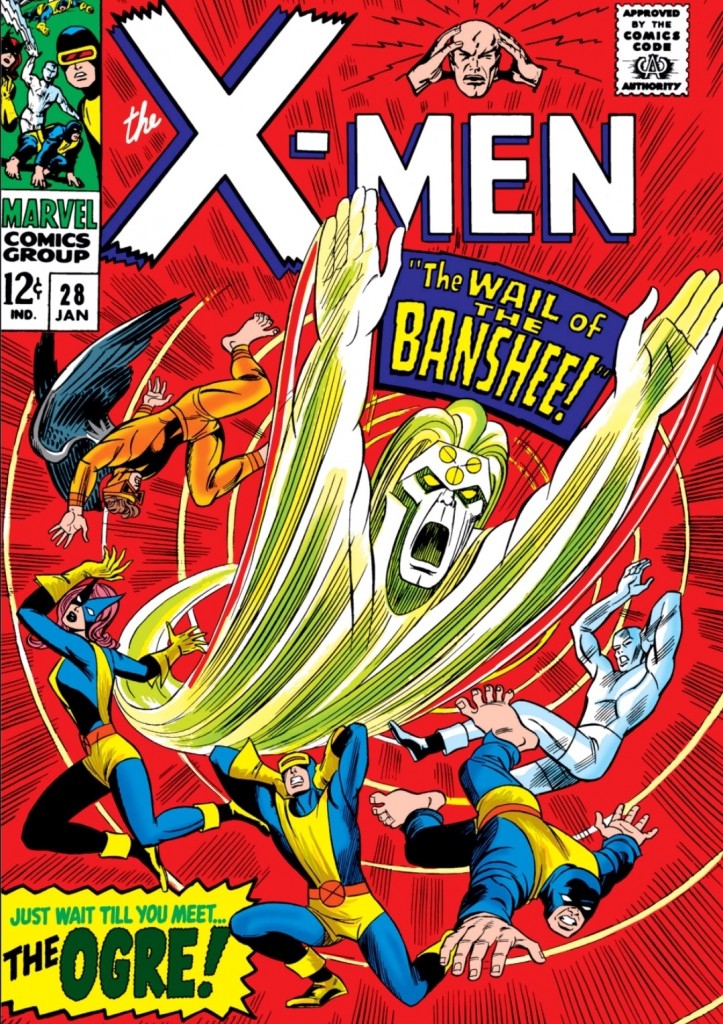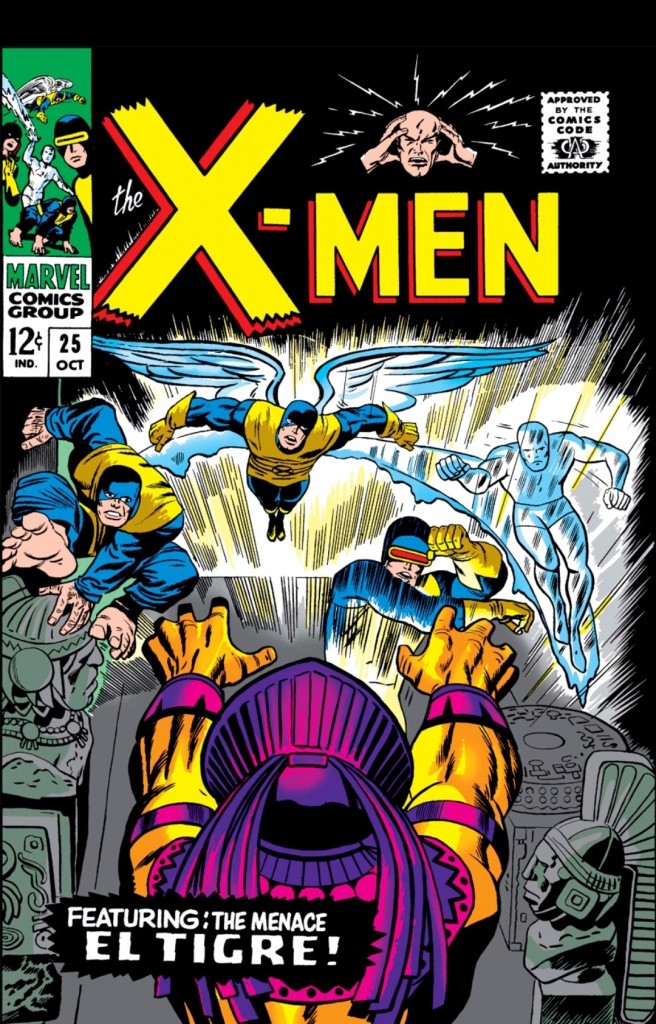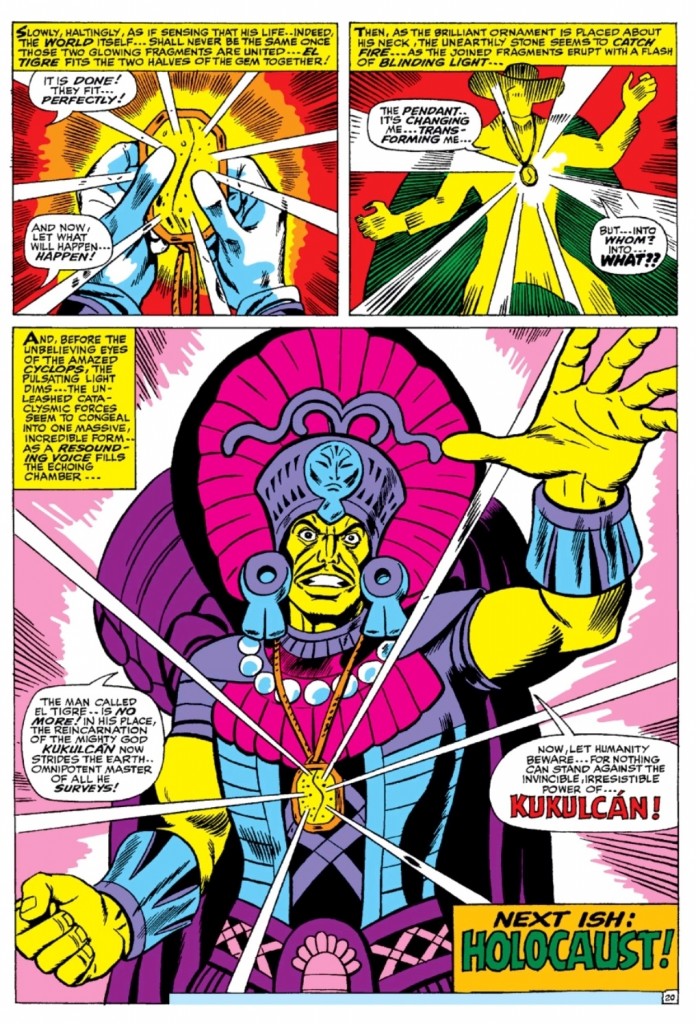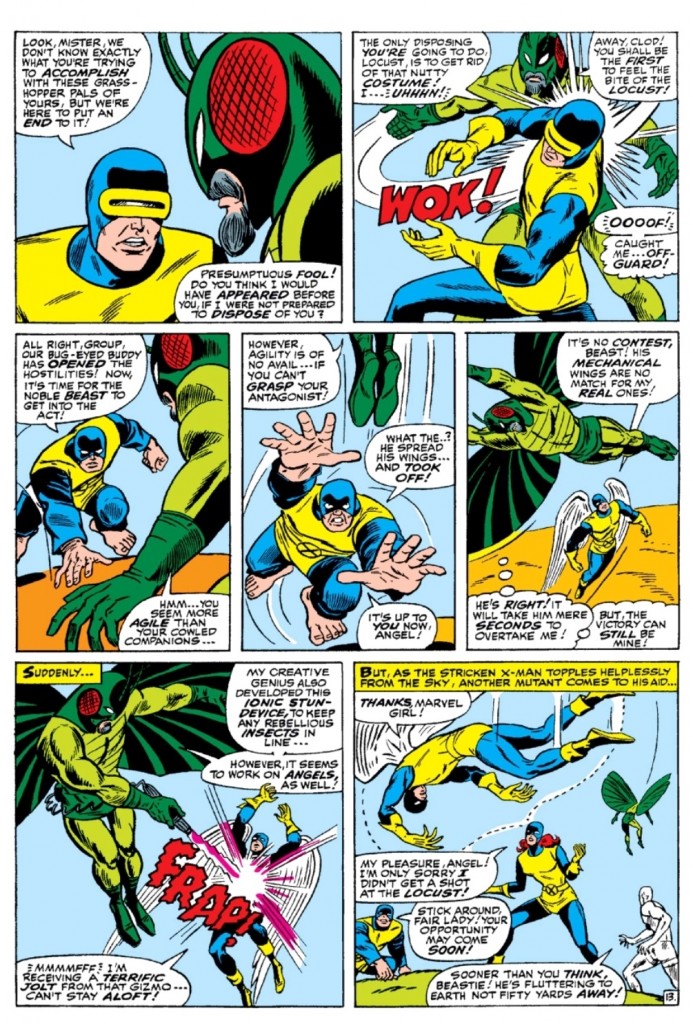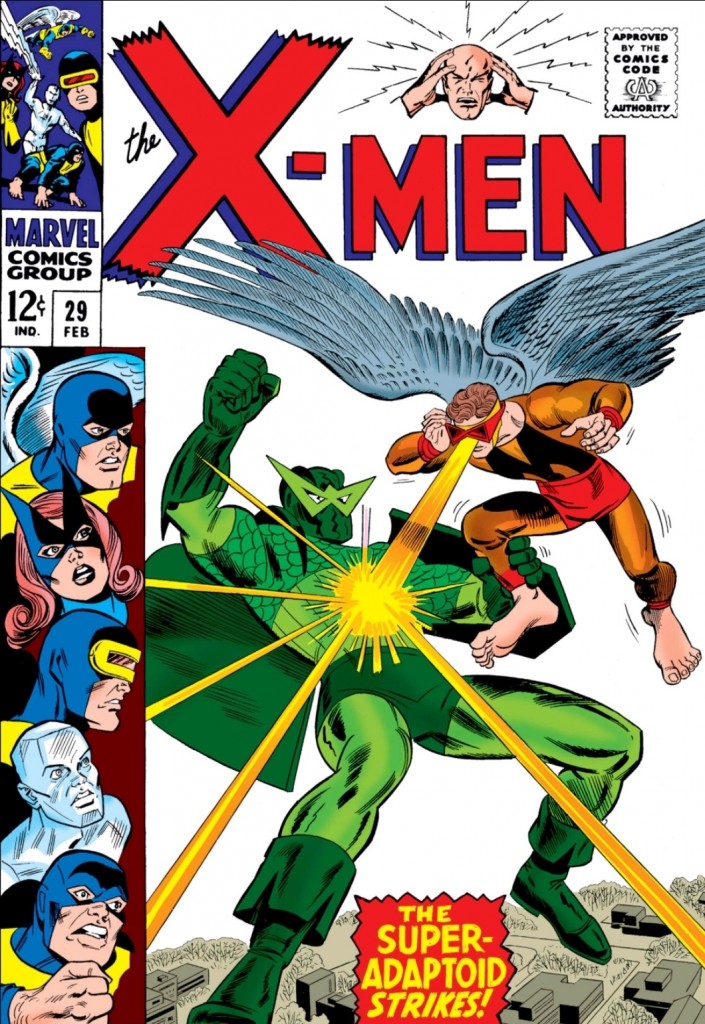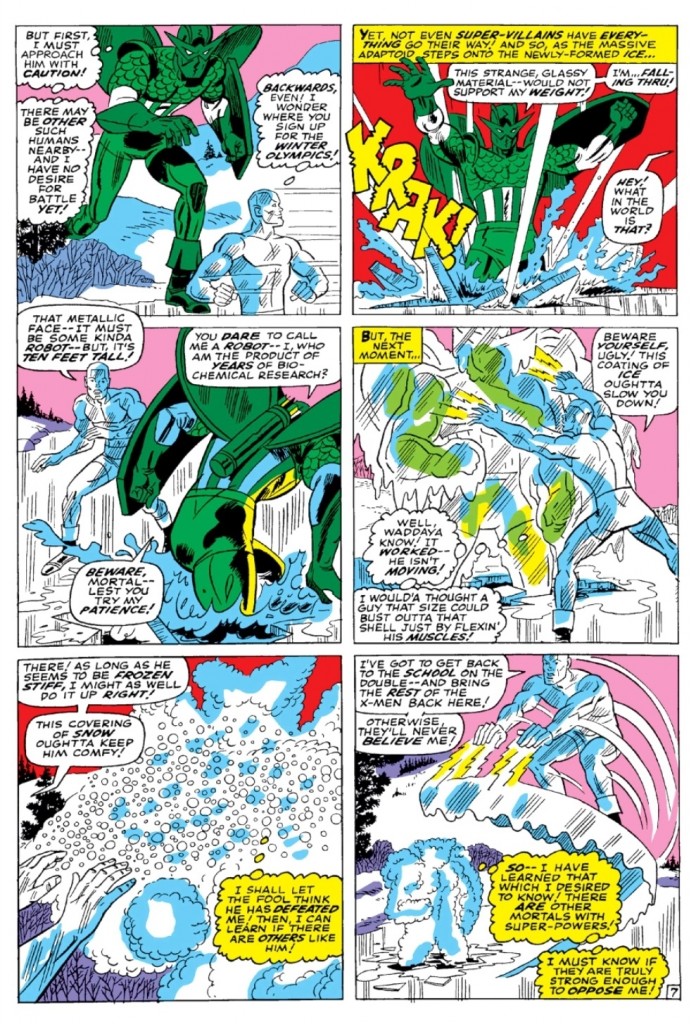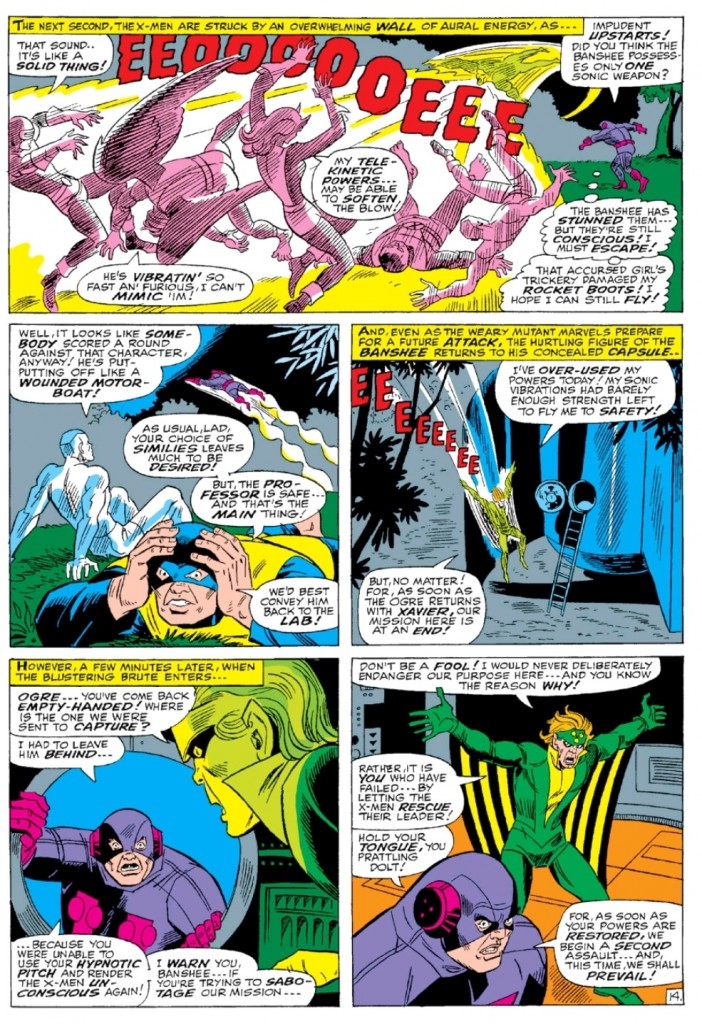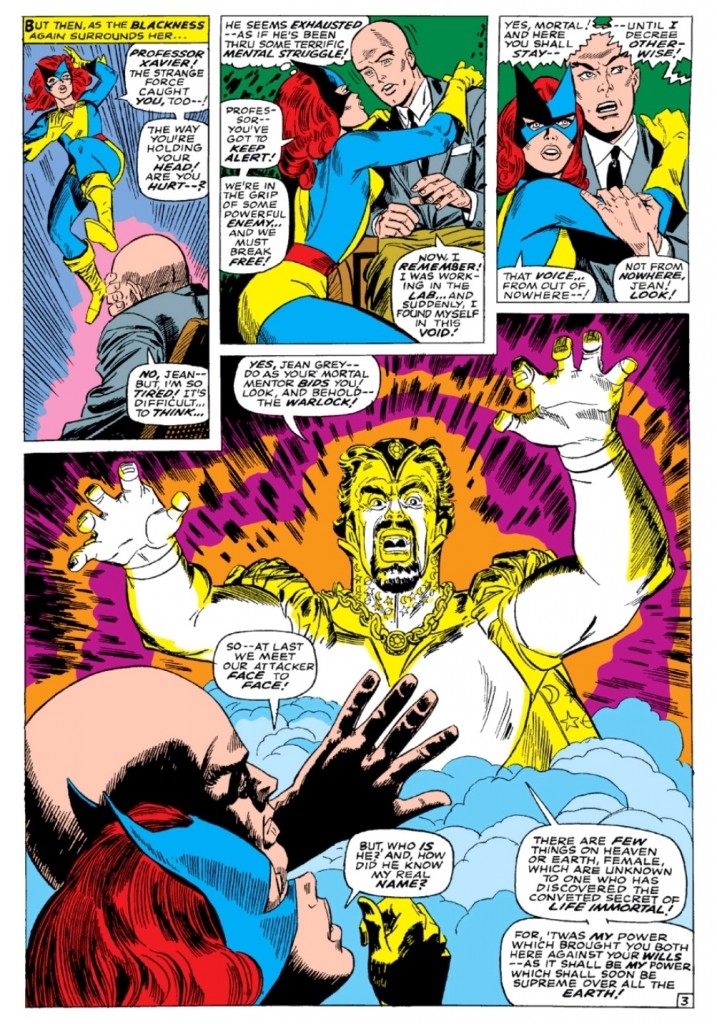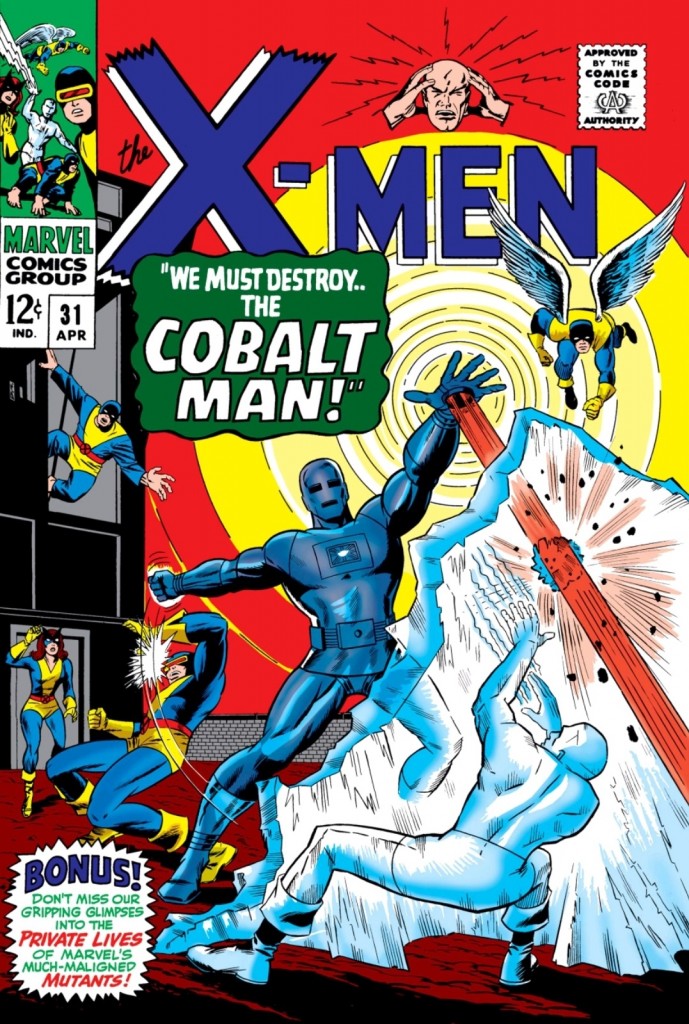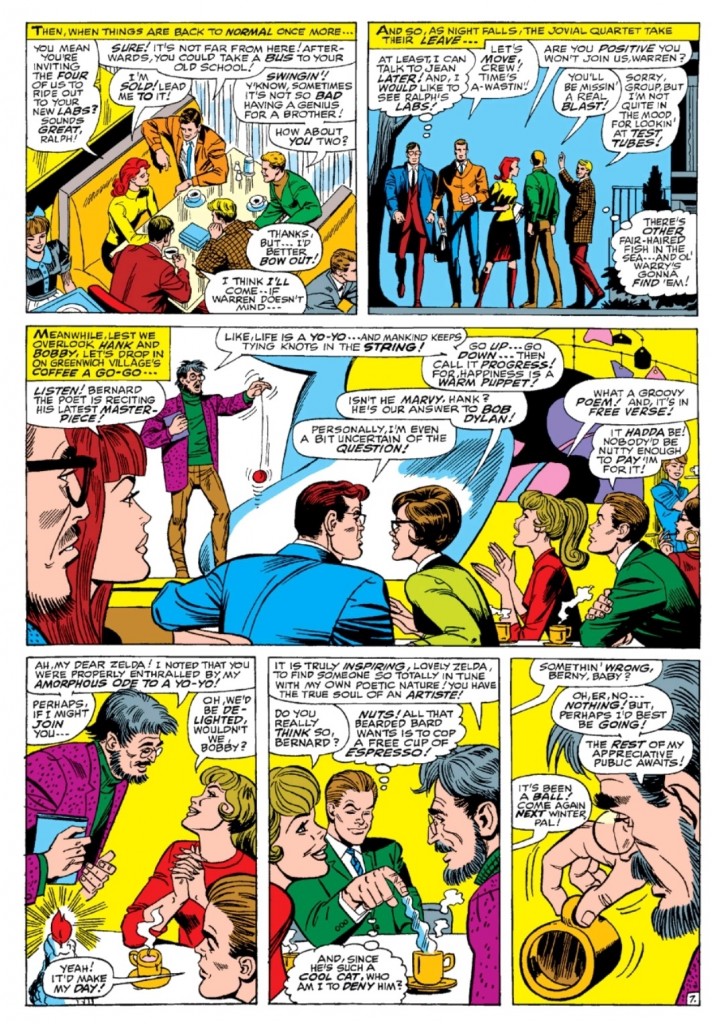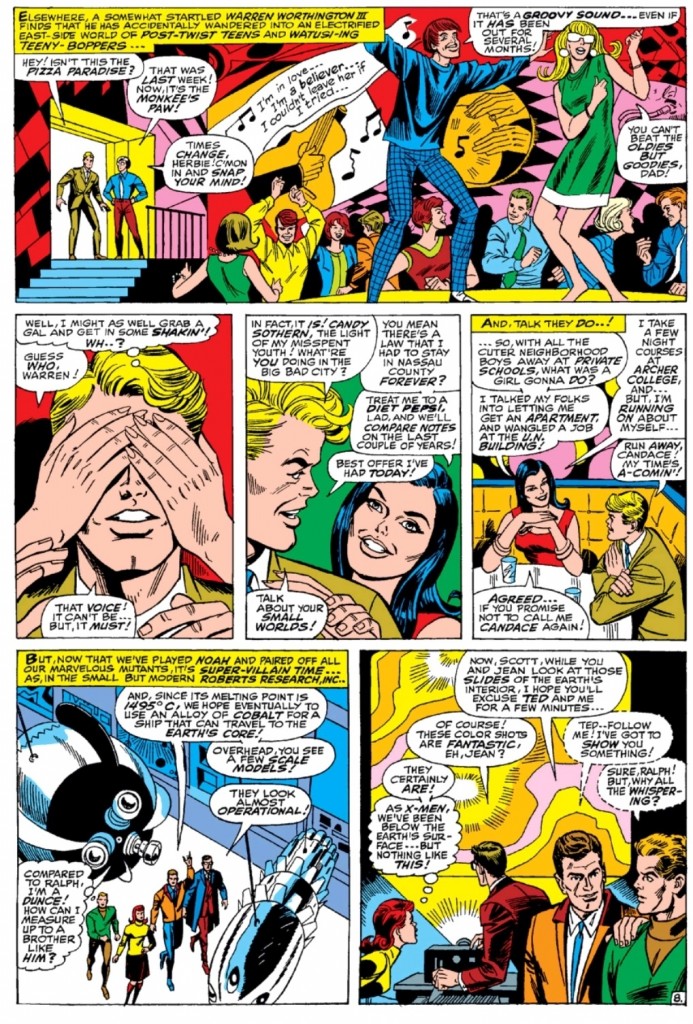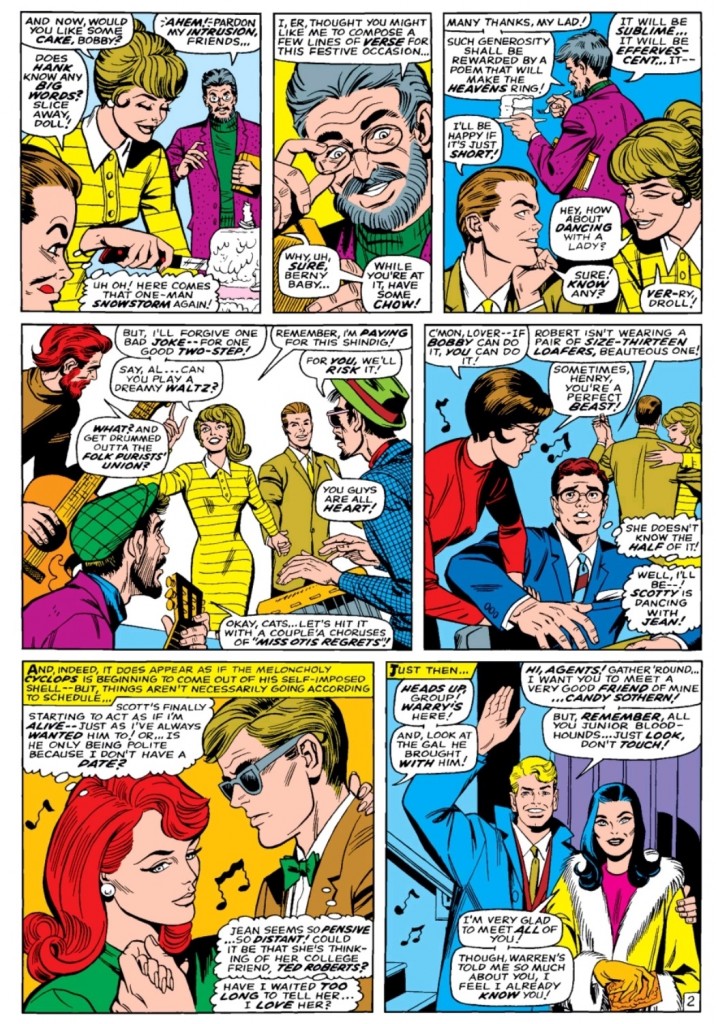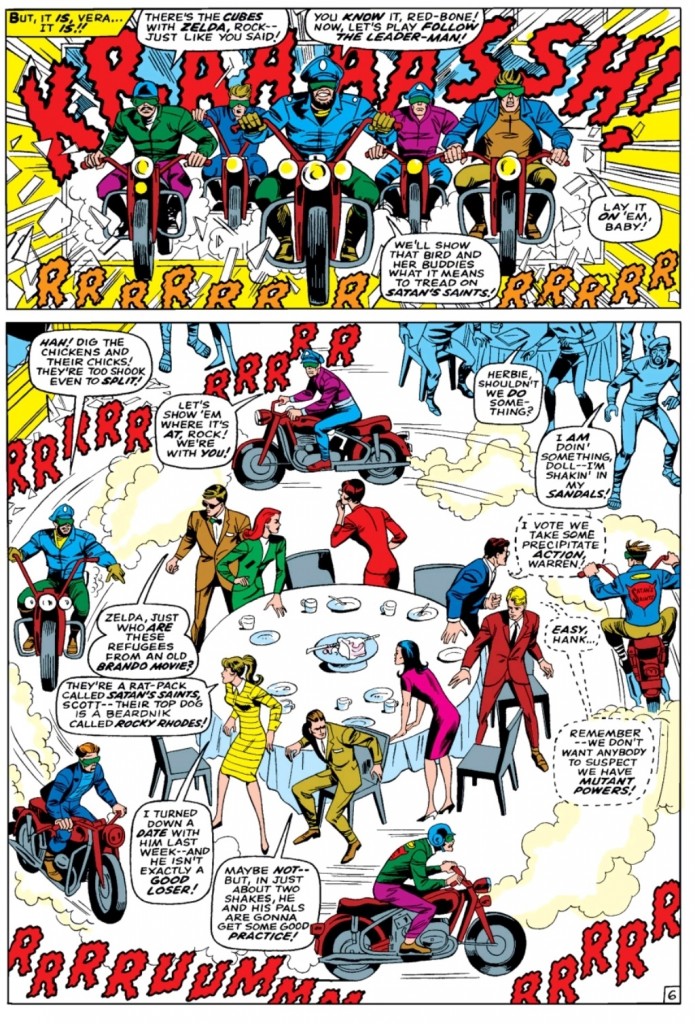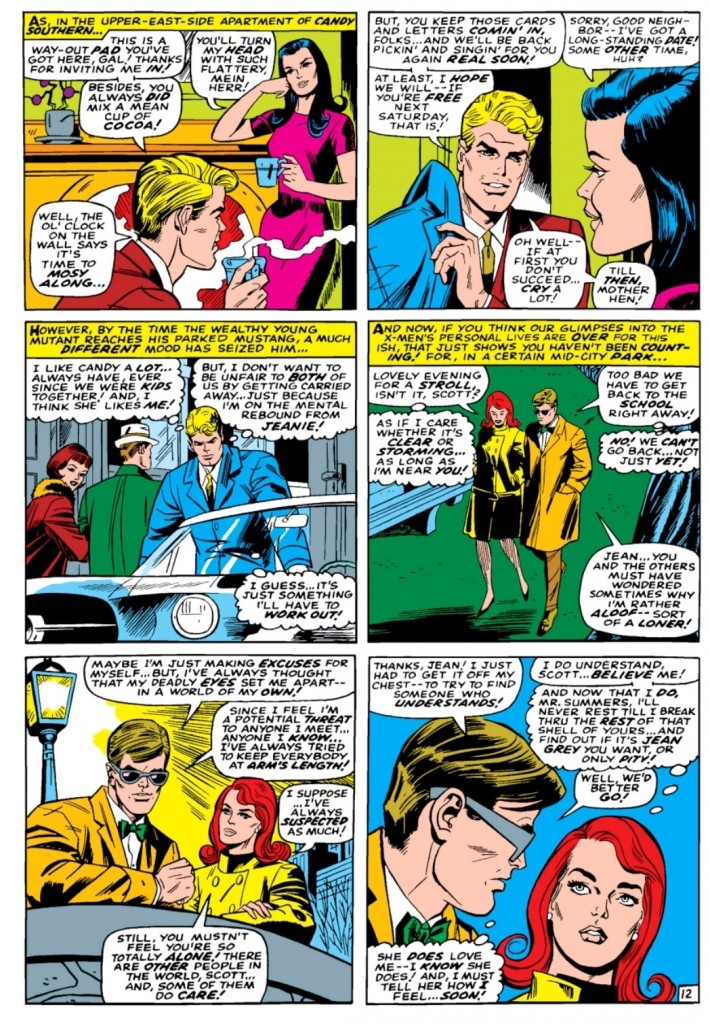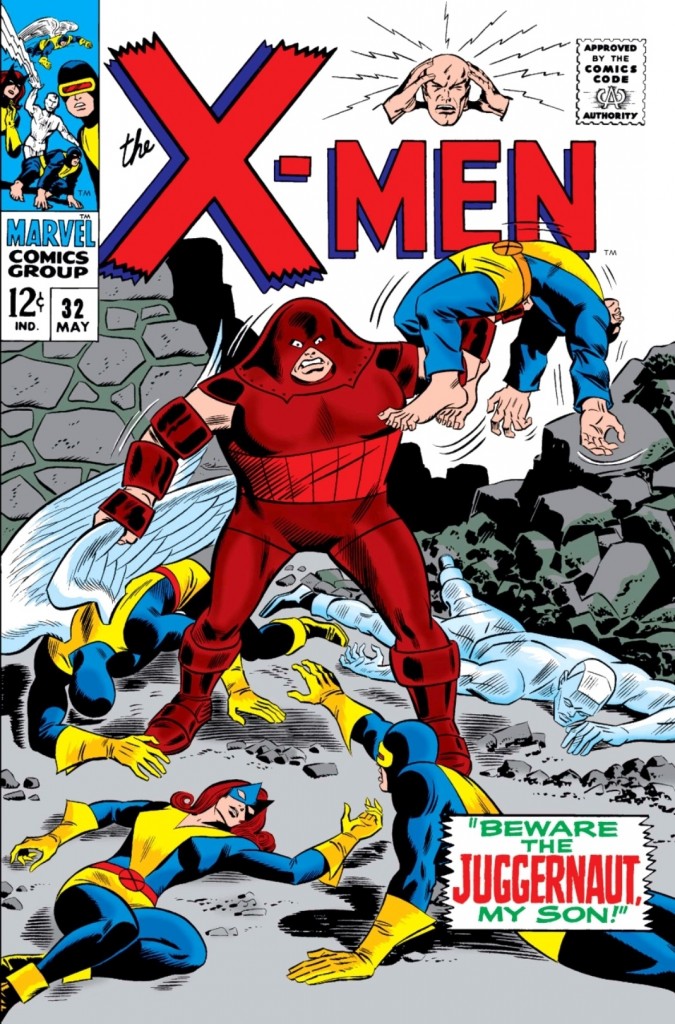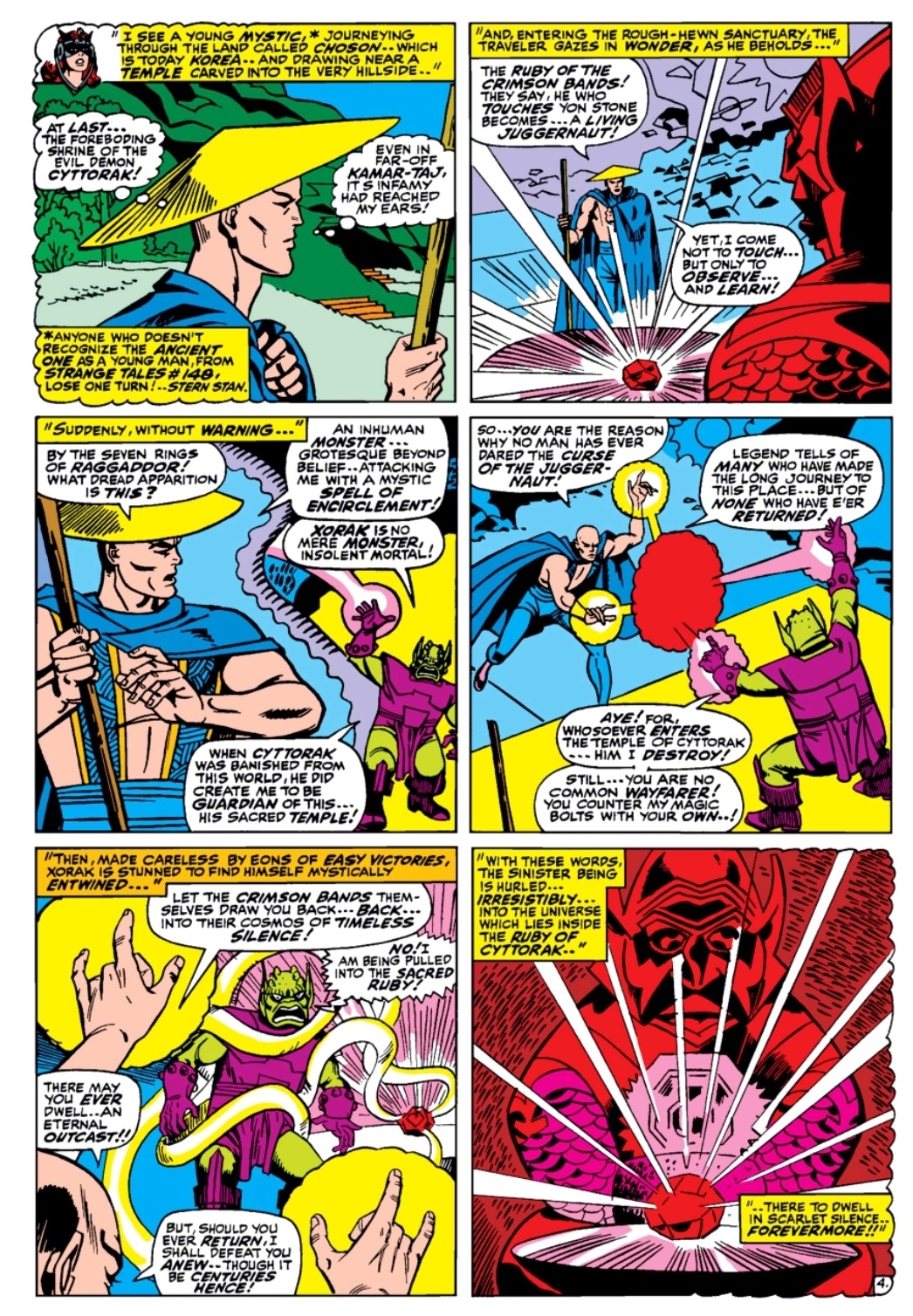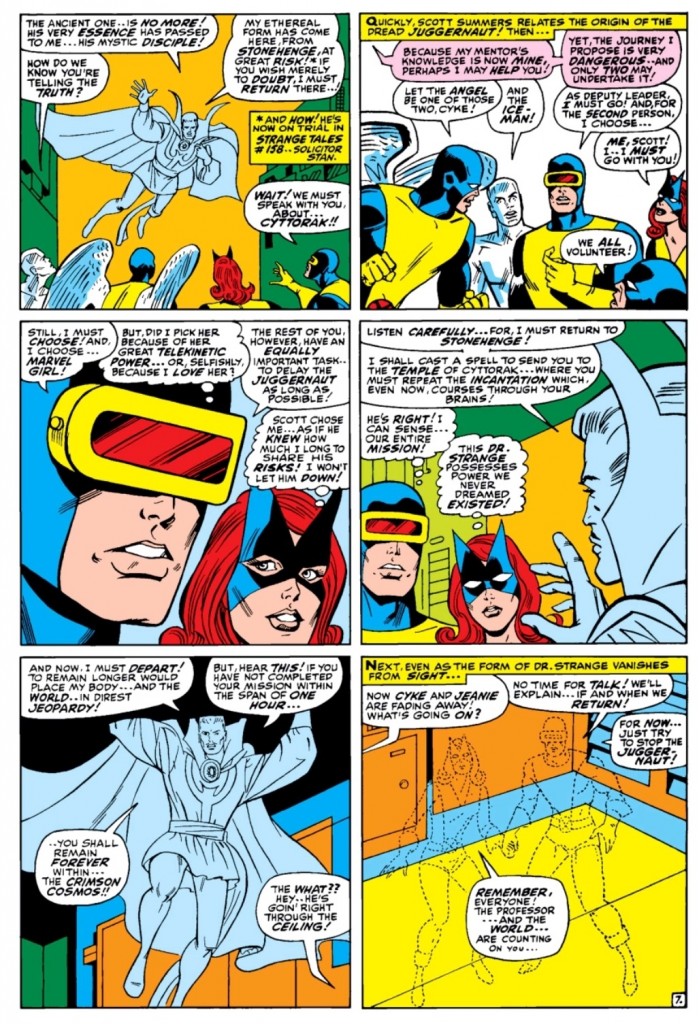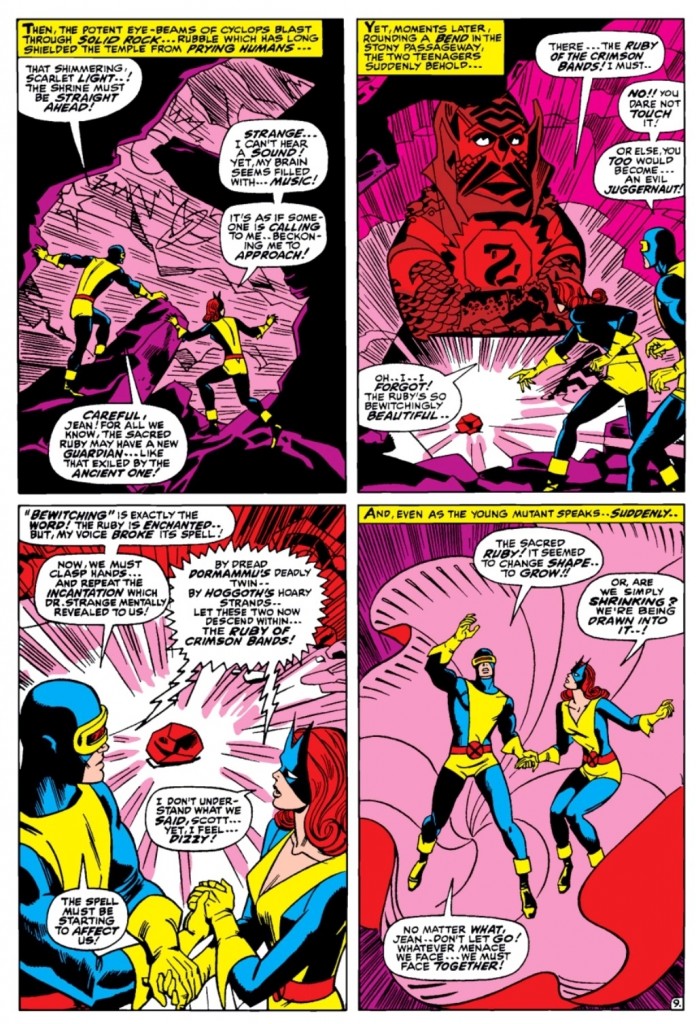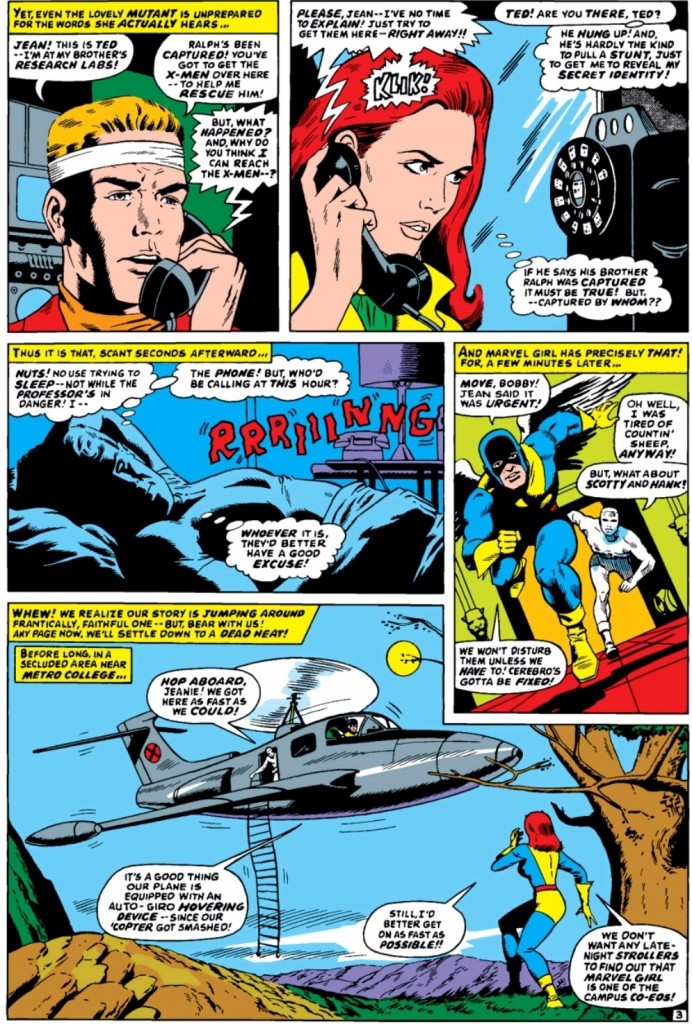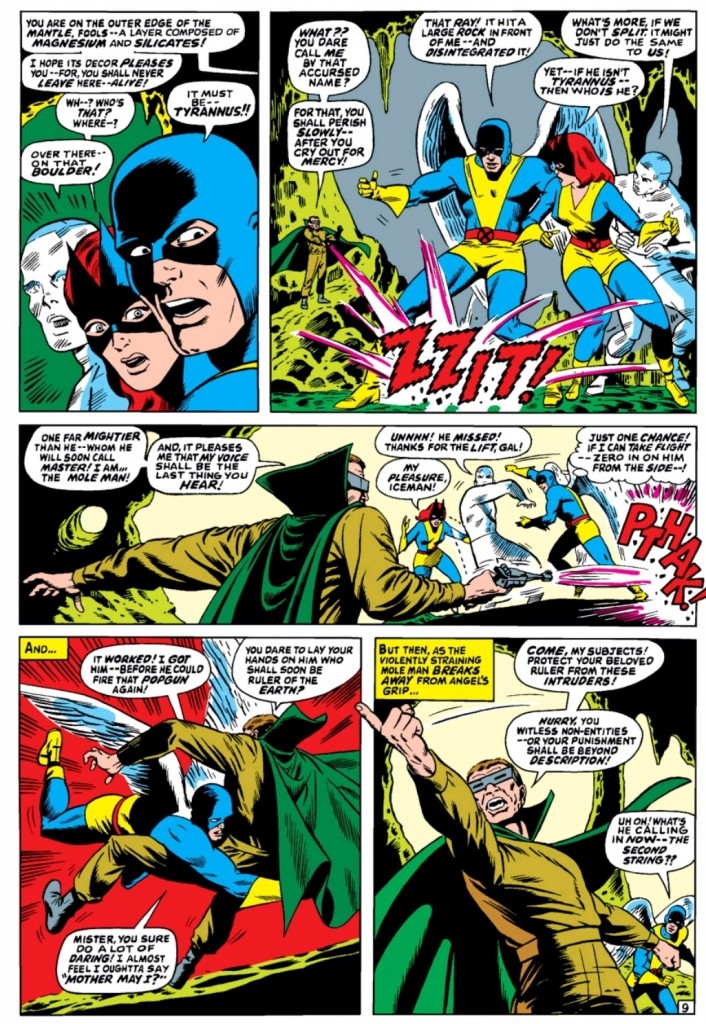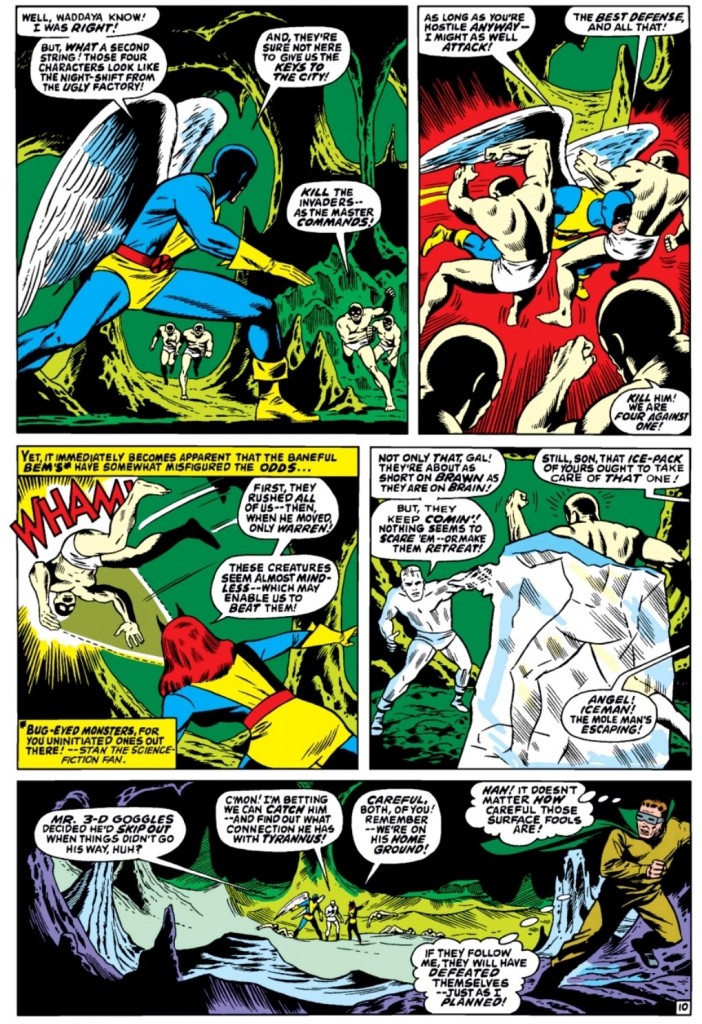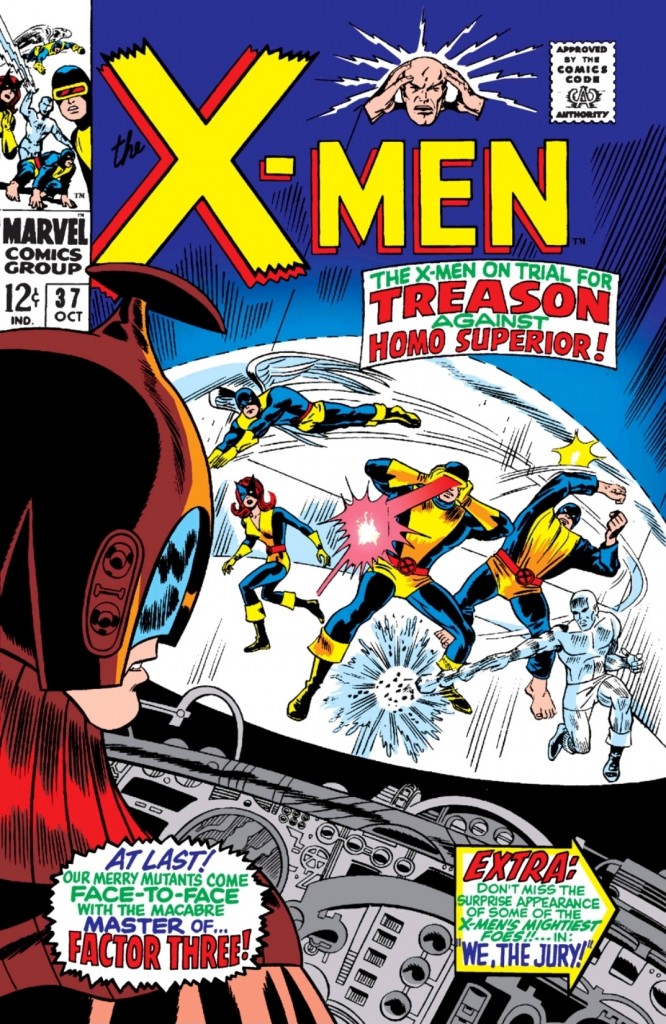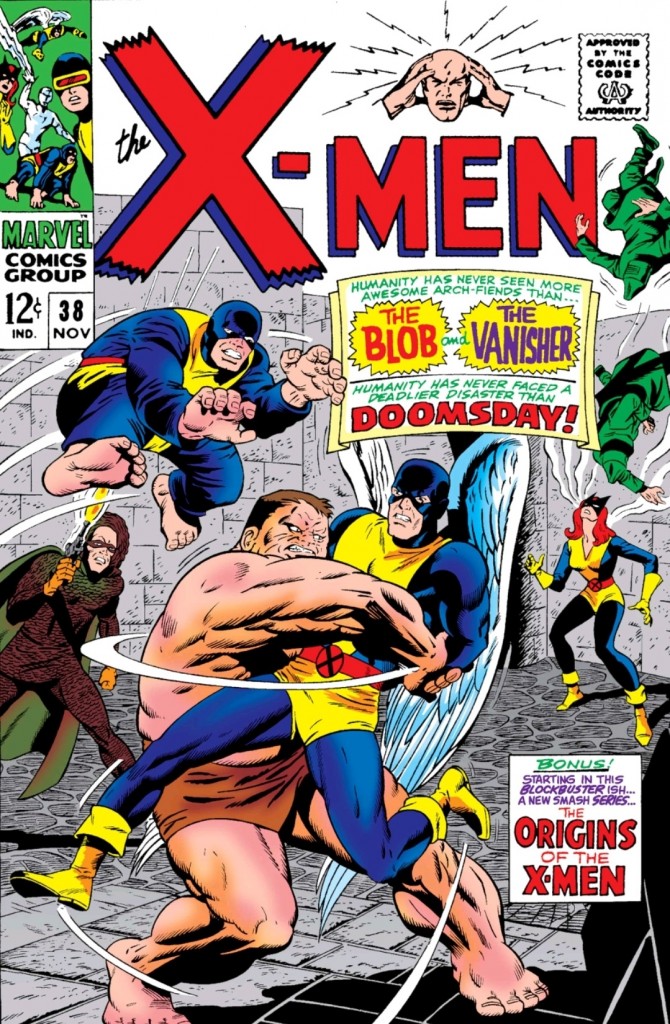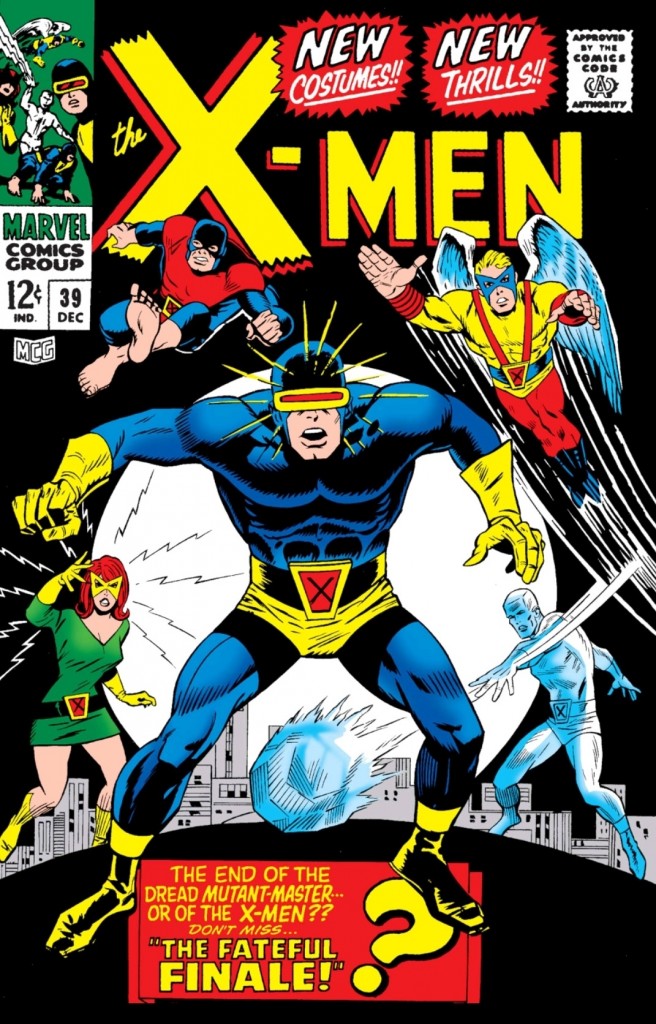X-Men, Part 4: Issues #24-39: The Middle Years of the Original Team
While travelling in November, I loaded a bunch of X-Men comics onto my phone for the airports. I haven’t stopped reading and I started blogging about my reread. I’ve made the reread slightly more complete by adding in stories that were written later but fit into the canon.
In this post, I’m covering my thoughts on X-Men #24-39, with cover dates 1966-1967 which cover, most significantly, the introduction of Banshee and the multi-part Factor Three story. I mention the dates though because for the older issues I often spool up music from the corresponding year to play in the background for flavour. If you’re reading along at home via Marvel Unlimited or trades or Masterworks, give it a try. It’s weird way to situate yourself in the historical era.
It’s also important to situate ourselves in the comics era. During this period, Roy Thomas was getting his feet under him, with maybe as many hits as misses? Elsewhere in the Marvel Universe, Kirby and Lee were introducing the Silver Surfer, Galactus, and the Black Panther. On TV, the Adam West Batman series was premiering, as was the animated Spider-Man series, the first Fantastic Four animated series, as well as Marvel’s old Thor, Captain America and Iron Man cartoons which were half animated, half motion comic. It was a heady time to love superheroes, although I missed it by 15 years.
[Click the images for Marvel-sized versions.]
A lot of this X-Men run felt middling. Roy Thomas was a really new writer in what was really a new industry. Remember that DC’s Silver Age Flash was now 10 years old, but stylistically, DC was applying pulp science fiction principles to clean, conservative art styles aimed at kids, so this wasn’t really a model Marvel could follow.
Marvel was making up a new comic style as they went. They were just figuring out that a lot of college kids were reading their comics and they’d never really created stories for or marketed aggressively to teens before. And the entire Kirby-Lee-Ditko experiment at this point was only 5 years old (FF #1, 1961) and future major IP like X-Men and Avengers were only 3 years old (both started in 1963). So in addition to Roy Thomas being a new writer, I feel that he, along with everyone else, was trying to shoot at a moving target. Artwise, there are a few obvious artist fill-ins on some of the more pretty mediocre stories, which is often evidence that the planned book was late so a one-shot was thrown together in an all-hands-on-deck effort to hit the print deadline.
The other general statement I’ll make before diving into individual issues is just how bad the X-Men visual design is in issues #6-#38. Yes, they’re all in a school and they literally have similar uniforms, but after about six issues, some new design might have helped the series. Other than Iceman, whose look is iconic, the rest are just wearing pyjamas, which saps some of the possible cool from the team.
For a super interesting perspective on the initial aesthetic of the X-Men, check out a recent blog post by Tom Brevoort. I expect that his information is quite reliable since he’s been on the Marvel editorial staff for 30 years. He offers an intriguing look at what Marvel was trying to do with the X-Men, the Avengers and Daredevil.
Coming off of a weak landing from X-Men #23, issues 24-26 are, if anything, unfortunately weaker. In #24 they fight a university professor who dressed like an insect and enlarges locusts. I feel bad to say that I couldn’t be bothered to understand his motivation. The bit about Jean having to leave the X-Men to attend Metro College was far more interesting.
In #25-26, a Tomb Raider type discovers some pre-contact mystical objects in Central America that turn him into a super-being called El Tigre. The X-Men get to fight in something that looks like Guatemala, but this made me think of maybe another reason the original X-Men never took off: the X-Men’s powers are relatively weak and have few interesting variations (Iceman’s various ice constructs being the exception).
None of the originals are very tough and they’re constantly being taken out by very human henchmen. It might be a failure of imagination, but I’ve never been able to see any reason Beast, Marvel Girl and Angel could pose even a momentary threat to Magneto or Juggernaut, but that may be because I was introduced to those villains by Claremont-Byrne or Claremont-Cockrum. Or maybe my nerdy side is taking over?
More importantly narratively though, none of the villains they face in this period really have much to do with the X-Men. The villains have no thematic importance to the core of the X-Men story, which is about the persecution of being different. Theme can rescue a floundering story.
The Mimic comes back for a few issues, during which they fight the Super-Adaptoid for almost no reason at all. However, the character interactions remain 1960s good, feeling more genuine than what DC could offer in any of its titles until Denny O’Neill would come on the scene and write Deadman and Batman. The Mimic versus Super-Adaptoid is a good match up, because both of them copy the powers of others.
I think the most significant issue in the 20s is #28, in which important things happen. The first is the introduction of Banshee, who will make several appearances in the original X-Men run before becoming one of Len Wein and Dave Cockrum’s X-Men in 1976 in X-Men Giant-Size #1.
Banshee is a great character, and on and off be a mainstay of the Claremont X-Men. The other thing that issue #28 does is introduce Factor Three, a shadowy organization whose mystery won’t come to an end until issue #39. Roy Thomas is finding his footing and telling longer stories with more tension. And in full geek mode, I maybe strengthen my “the original X-Men are weak” thesis by noting that Banshee mops the floor with all of them and has interesting and creative things he can do with his powers.
I include above a page from issue #30 the most striking example of a filler issue interrupting Roy Thomas’ main narrative. I don’t know how many other titles Dan Adkins was inking, but he’d been replaced by John Tartaglione since issue #29 and Jack Sparling subbed in for penciller Werner Roth for #30. The art is appealing, although perhaps not a great fit for X-Men. It would work better for Dr. Strange. This is the start of artist fill-ins throughout the next bunch of issues, suggesting to me that X-Men was a low-priority title getting whichever artist was free.
Issue #31 is fun because of a villain with a great character design, and the deepening look into the social lives of the X-Men, especially when they spend time in beatnik coffeehouses. That’s when we get to see what Stan Lee and Roy Thomas thought beatniks might sound like.
Vera and Zelda, Hank and Bobby’s on-again, off-again, abandon-again, ghost-again girlfriends are a running joke through the series, and Vera at least has a fair bit of longevity, appearing all the way into Beast’s time in The Defenders.
It also delighted me to see Warren give up on Jean, as she is clearly preferring Scott. This leads to the first appearance of Candy Southern, who becomes Warren’s flame until at least the Dark Phoenix Saga. This also leaves the way open for painfully-shy Scott to finally tell Jean that he has feelings for her but that he’s terrified of hurting someone close to him with his optic blasts. These character moments are one of the big charms of this period, including when a bike gang invades the coffee house.
But while the art chores get passed around and have their fit issues, Roy Thomas shows increasing strength as a superhero writer as the Factor Three plot thickens. The Juggernaut comes back. Professor X had been hiding his comatose body in the basement, trying to free him from the magical curse that made him Juggernaut.
This turns into a two-parter over #32-33 that I unabashedly loved. Dr. Strange makes an appearance to advise and help the X-Men defeat the Juggernaut through the curse of Cyttorak. We get a flashback to the Ancient One, the astral form of Dr. Strange, and Jean and Scott actually go into the dimension of Cyttorak. For continuity nuts among us, I’ll also note that between X-Men: First Class (2006) and X-Men (1966), we have two separate introductions of the X-Men to Dr. Strange. Other than that minor detail, X-Men: First Class shows few seams with the original series.
This story is fun not only because I love Dr. Strange and his whole mythos, but because I like seeing Scott and Jean together. If you want to know what I think of Dr. Strange, I have three blog posts so far on my rereading of his appearances:
Part I: Establishing the Mythos,
Part II: Becoming Sorcerer Supreme, and
Part III: The Middle Bronze Age.
Issue #34 is a one shot with Dan Adkins inking himself for some really appealing moments flavoured with some Wally Wood flourishes in the proportions and body language. I show some above and below. The X-Men have to rescue someone from the subterranean world of Mole Man and Tyrannus. This is another nod to the pulps, like the Savage Land in issue #10. And as in issue #33, the team splits into interesting little groups and we see giant fighting robots and waters of Lethe.
In issue #35, Spider-Man appears and while it was a throw-away story, it gave me two thoughts. First, were the guest appearances of Spider-Man and Dr. Strange to help pick up flagging sales? I checked the annual sales figures for 1967 at Comichron, and while X-Men circulated north of 260,000 copies, they were 7th of about a dozen Marvel titles, in a list where DC held the first nine sales slots. So, maybe they were to help sales, or maybe it’s just normal Marvel cross-overs. Second, Spider-Man’s voice was more natural than any voice in the X-Men. Thomas obviously had a better handle on the character of Spider-Man than any of the X-Men, which points to people still not really being sure what the X-Men were or were about.
Issue #36 features a lame villain, with a lame design, and a lame raison d’être. The fact that Ross Andru and George Bell were pitching in art instead of the regular team seems to be more evidence that the regular artists were too stretched and that X-Men was a lesser priority. I wonder if X-Men might have done better if it had stayed bi-monthly?
However, the last three issue I want to talk about today finish up the Factor Three story. The pencillers are variously Don Heck, Ross Andru, and Werner Roth, with inking by Don Heck, George Roussos, John Verpoorten and Vince Coletta. If you can handle sudden shifts in art style, or consider it a sampler surprise, you’ll do well.
Roy Thomas gives us lots of excitement as the X-Men fall out of an airplane, fight the Vanisher, Blob, Mastermind, and a new mutant called the Changeling, all of whom are serving a hidden big bad. There are some weird political, nuclear war themes, as well as some more thematically on point ones like when the X-Men were put on trial for their crimes against the Homo superior. In the end, it all comes down to stopping the bad guy in his lair, with the help of Professor X and Banshee.
And at the end of it all, the X-Men graduate from pyjamas into more visually appealing costumes. This is also the start of a series of back-up stories featuring the origins of the X-Men prior to X-Men #1. These are great insights into the characters before they were heroes and were always one of my favourite bits. And thinking in meta terms, this is probably a good response to the ongoing artist delays. With 5 pages of back-up feature, the main story pressure on the artists is only 15 pages per month.
I’m really enjoying this reread, despite some of the knocks I made about this period. It is a team I love and an period of comics history where creative teams were driving without a map and the work can be enjoyed with a bit of forgiveness. I’m going to keep going.
In my next post, I’ll cover issues #40-53, which includes the Steranko period and the origin of Polaris. Then in a separate post, I’ll talk about issues #54-66, which will capture the Neal Adams run, the introduction of Havok, Sunfire and Sauron, and in theory takes us to the end of the original X-Men run, although not exactly. (You’ll see.)
If you want to read along, Marvel Unlimited weighs nothing and costs less than Netflix. If you’re into pricier and paper, the X-Men Omnibus and several Marvel Masterwork hardcover reprints have been recolored.
If you want to catch up on any of my other posts about the X-Men, they’re below:
- Part 0: A Fresh Look at X-Men Continuity: Ed Piskor’s Grand Design
- Part I: Introducing The Strangest Super-Team of All: Uncanny X-Men #1 (Nov 1963) to #20 (May 1966)
- Part II: Early Guest Appearances (1964-65), Uncanny X-Men #21-23 (1966), and X-Men: First Class Volume I (2006)
- Part III: X-Men: First Class, Volume II (2007) and First Class Finals
- Part IV: Uncanny X-Men #24-39: The Middle Years of the Original Team
- Part V: Uncanny X-Men #40-48: Death and Separation
- Part VI: Uncanny X-Men #49-53: Reunion and Family and Steranko
- Part VII: Uncanny X-Men #54-58 — Havok and Neal Adams
- Part VIII: Uncanny X-Men #59-66: The Savage Land and the End of the Silver Age X-Men
- Part IX: Filling in the Corners of the Original X-Men with Savage Hulk #1-4
- Part X: John Byrne’s The Hidden Years #1-4
- Part XI: Storm, the FF and Phoenix in John Byrne’s The Hidden Years
- Part XII: X-Men Guest Appearances in 1971-1972 and Hank gets Furry!
- Part XIII: Englehart’s Bronze Age Monster Horror – The Beast
- Part XIV: 1973 and 1974 – Magneto, the Hulk, Banshee and post-Watergate Captain America
- Part XV: 1974 and 1975 – The Last Tales of the Original X-Men
- Part XVI: Enter Wein, Claremont and Cockrum in 1975
- Part XVII: 1976 — Sentinels in Space and the Rise of Phoenix
- Part XVIII: Juggernaut and Magneto — For the Very First Time
- Part XIX: Phoenix, Firelord and the Imperial Guard
- Part XX: Iron Fist, Blame Canada and Some Strike-Outs
- Part XXI: Epic Magneto Triumph and more X-Men Death!
- Part XXII: 1978 — The Savage Land, Japan and Psionic Throwback Thursday!
- Part XXIII: 1979 — Chaos in Canada with Alpha Flight!
- Part XXIV: Arcade, Murderworld and their First King-Sized Annual
- Part XXV: The Proteus Saga and My First Comics!
Derek Künsken writes science fiction in Gatineau, Québec. His first novel, The Quantum Magician, a space opera heist, was a finalist for the Locus, Aurora and Chinese Nebula awards. Its sequel, The Quantum Garden is on sale now. He has upcoming stories in Asimov’s Science Fiction Magazine, and a new novel serialization in Analog Science Fiction and Fact. He tweets from @derekkunsken.
